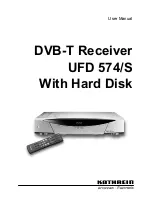
31 |
P a g e
APPENDIX C RF Topics
This section discusses some topics to ensure the best RF coverage range.
C.1 RF Channel Selection
The 802.15.4 wireless standard uses 16 RF channels numbered 11 through 26. Each channel
has a bandwidth of 2MHz and channels are separated by 5MHz. When the ZW-REC is powered
on it automatically searches for the quietest channel to use for communications. You may also
choose to manually select your RF Channel. (See
Section 5.4
)
Manually selecting an RF channel may be necessary if there are running multiple receivers in
one area. While multiple Receivers can coexist on the same RF channel, selecting different
channels is recommended. Using separate RF channels will reduce potential interference
between systems. This is particularly true for large deployments.
Wi-Fi networks may also create interference with the ZW-REC. Wi-Fi networks operate on
fixed frequencies with channels occupying 20MHz or 40MHz of bandwidth. While there are
many Wi-Fi Channels there are only a few non-overlapping channels that are generally used.
Figure 29
shows the 802.15.4 channels mapped against the occupied bandwidth of the most
commonly used Wi-Fi Channels in North America and Europe. If the Wi-Fi channels currently
in use are known, select an 802.15.4 channel that does not overlap with it to reduce
interference.
C.2 Signal Strength Indicator
Signal Strength is displayed as a percentage, for each end device, in the End Device Status
Page. This indicates how well each End Device can hear the ZW-REC. The ZW-REC and most
end devices have a receive sensitivity of -96dBm or better. In most cases this means that a
Signal Strength reading of 15% to 20% is reasonable for maintaining reliable communication.
The ZW-REC transmits at a power of +9.5dBm. Certain End Devices are lower power than the
ZW-REC so the received signal strength is higher at the End Device than it is at the ZW-REC.
For these End Devices the Signal Strength indicator needs to be higher for reliable
communications. For these low power devices, a signal strength of at least 25% to 30% is
recommended.
Figure 30
shows the rough mapping from Received Power to Signal Strength. Receive power is
measured in dBm which is a logarithmic term. For every 10dBm increase in receive power the
actual power is increased by 10 times. For Low Power End Devices, the received power at the
ZW-REC may be 10dBm, or more, lower than indicated by the Signal Strength field. Take this
into account when evaluating link quality for low powered devices.
Figure 29. 2.4GHz Spectrum Map






































